This information describes an arm exercise program that will help you with your recovery.
Doing arm exercises with gentle movements will help prevent you from feeling stiff. It will also help you move better and get back your strength and endurance.
The arm exercises below will help you work on a few different muscle groups. Your occupational or physical therapist may adjust the exercises to meet your needs.
Exercise Tips
- Dress comfortably so your clothes don’t limit your movements. Wear a hospital gown, pajamas, or athletic clothing.
- Do each movement slowly.
- Don’t hold your breath while doing any of these exercises. Breathe deeply. It might be helpful to count out loud during the exercises to keep your breaths evenly paced and remind you to breathe.
-
Do these exercises while lying in bed, sitting at the edge of your bed, sitting up straight in a chair, or standing.
- If you do them while sitting at the edge of your bed or standing, make sure there is a responsible care partner nearby. This will help to make sure you’re safe and lower your risk of falling.
- If an exercise feels uncomfortable or painful, don’t do it. Tell your occupational or physical therapist which exercises are uncomfortable. Keep doing the other exercises that don’t hurt you.
- If you have any questions, talk with your physical therapist or occupational therapist.
Exercises
Shoulder shrugs
- Move your shoulders up toward your ears, like a shrug (see Figure 1).
-
Drop them down (see Figure 2).
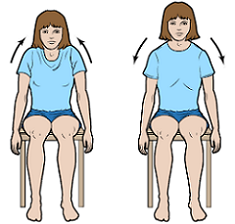
Figure 1 and Figure 2. Shoulder shrugs
Repeat ____ times.
Do this exercise ____ times per day.
Shoulder squeezes
-
Move your shoulders backward, toward your back. Try to squeeze your shoulder blades together (see Figure 3).
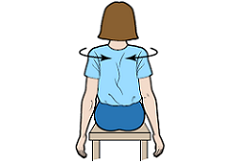
Figure 3. Shoulder squeezes - Hold for ____ seconds.
- Relax.
Repeat ____ times.
Do this exercise ____ times per day.
Draw shoulders forward
-
Move your shoulders forward, towards your chest (see Figure 4).
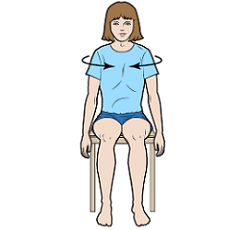
Figure 4. Draw shoulders forward - Hold for_____ seconds.
- Relax.
Repeat ____ times.
Do this exercise ____ times per day.
Shoulder circles
-
Roll your shoulders forward in a circle _____ times (see Figure 5).
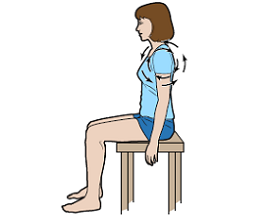
Figure 5. Shoulder circles - Roll your shoulders backwards in a circle ______times.
- Relax.
Do this exercise ____ times per day.
Sideways arm rotations
- With your arms at shoulder height, clasp your hands together in front of you.
-
Without moving your waist, move your arms to the left (see Figure 6).
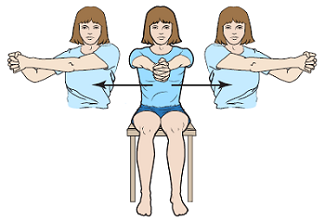
Figure 6. Sideways arm rotations - Return your arms to the center.
- Without moving your waist, move your arms to the right.
- Return your arms to the center.
Repeat ____ times.
Do this exercise ____ times per day.
Shoulder raise
While doing this exercise, if one arm is weaker than the other, clasp your hands together and raise both of them over your head.
- Start with your arms at your side.
-
With your palms facing each other, bring your arms in front of you and raise them up (see Figure 7).
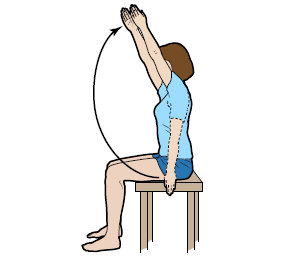
Figure 7. Shoulder raise - Return to the starting position.
Repeat ____ times.
Do this exercise ____ times per day.
Backwards shoulder swing
While doing this exercise, if one arm is weaker than the other, clasp your hands together and raise both of them over your head.
- Start with your arms at your side.
-
With the palms of your hands facing each other, raise your arms behind you as far as you can (see Figure 8).
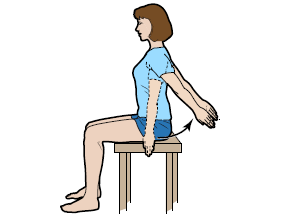
Figure 8. Backwards shoulder swing - Return to the starting position.
Repeat ____ times.
Do this exercise ____ times per day.
Sideways arm raises
-
Start with your arms relaxed at your sides (see Figure 9).
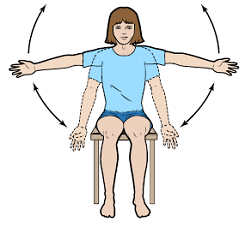
Figure 9. Sideways arm raises - Slowly raise your arms sideways as far as you can. If you can, try to raise them above your head.
- Return to the starting position.
Repeat ____ times.
Do this exercise ____ times per day.
If 1 arm is weaker than the other, have someone help you with your weaker arm.
Back climb
-
Place your hands behind your back. Use 1 hand to grasp your other wrist (see Figure 10). If one arm is weaker, use your stronger arm to help your weaker arm slide up your back.
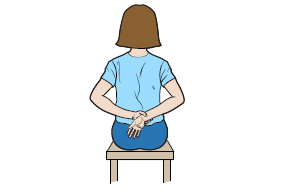
Figure 10. Back climb - Slowly slide your hands up the center of your back as far as you can.
- Hold for _____ seconds.
- Return to the starting position.
Repeat ____ times.
Do this exercise ____ times per day.
Shoulder wings
- Start by slowly raising your hands over your head (see Figure 11, left), then place them on the back of your neck (see Figure 11, center).
-
Spread your elbows as far apart as possible (see Figure 11, right).
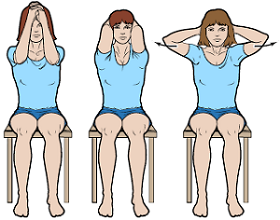
Figure 11. Shoulder wings - Hold for ______ seconds.
- Return to the starting position.
Repeat ____ times.
Do this exercise ____ times per day.
Elbow bends
- Start with your arms at your sides, with your palms facing forward (see Figure 12).
-
Bend your arm at your elbow until your palm touches your shoulder (see Figure 13).
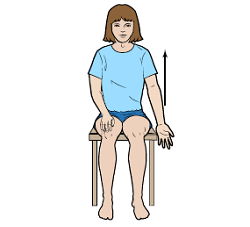
Figure 12. Palms facing forward 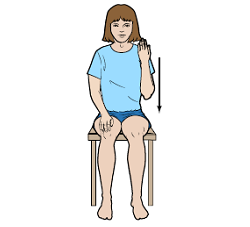
Figure 13. Bend your arm at your elbow - Return to the starting position.
- Repeat _____times.
- Repeat the exercise with your other arm.
Do this exercise ____ times per day.
If one arm is weaker than the other, use your stronger hand to clasp the wrist of your weaker hand and bend your elbows.
Forearm rotations
- Rest your forearms on your lap with your palms facing down.
- Lift 1 arm and turn your palm up toward the ceiling (see Figure 14).
-
Return to the starting position with your palm facing down (see Figure 15).
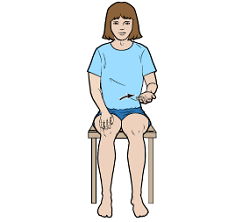
Figure 14. Lift arm and turn palm up 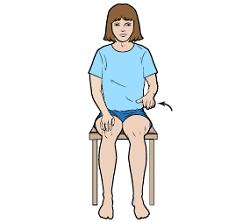
Figure 15. Rotate to starting position
Repeat ____ times.
Do this exercise ____ times per day.
If one arm is weaker than the other, clasp the wrist of your weaker arm. Rotate your forearm turning your palm up and down.
Wrist bends
- Place your arms on a supported surface such as a table, arm-rest of a chair, or desk. Your wrists should be hanging off the surface, leaving them free to move.
-
Turn your palms up toward the ceiling and bend your wrists up and down (see Figure 16).
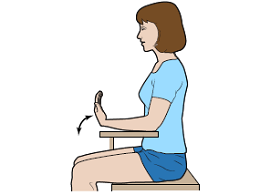
Figure 16. Wrist bends
Repeat ____ times.
Do this exercise ____ times per day.
If one arm is weaker than the other, use your stronger hand to clasp the weaker wrist. Bend it up and down.
Side wrist bends
- Place your forearms on a flat surface such as a table or your lap.
-
Without moving your elbow or forearm, move your wrists side to side (see Figure 17).
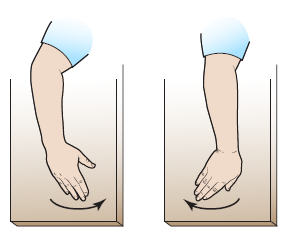
Figure 17. Side wrist bends
Repeat ____ times.
Do this exercise ____ times per day.
If one arm is weaker than the other, use your stronger hand to help the weaker hand. Bend your wrist side to side.
Finger bends
- Place your forearms on a flat surface such as a table or your lap.
-
Make a tight fist, and then open your hand and extend your fingers out until they’re straight (see Figure 18).

Figure 18. Finger bends
Repeat ____ times.
Do this exercise ____ times per day.
If one arm is weaker than the other, use your stronger hand to bend and straighten the fingers of the weaker hand.
Finger stretch
- Place your forearms on a flat surface such as a table or your lap.
-
Slowly spread your fingers apart, then bring them back together (see Figure 19).
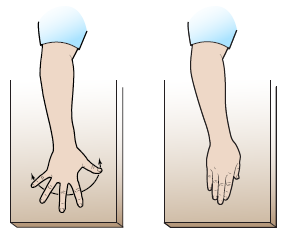
Figure 19. Finger stretch
Repeat ____ times.
Do this exercise ____ times per day.
Finger opposition
Touch each fingertip to your thumb (see Figure 20).

Repeat ____ times.
Do this exercise ____ times per day.
Pendulum exercise
- Lean over a table and support yourself with your stronger arm. Let your weaker arm hang down freely.
-
Swing your weaker arm in clockwise (to the right) and counterclockwise (to the left) circles and forward and back (see Figure 21). Let gravity help your arm with the motion.
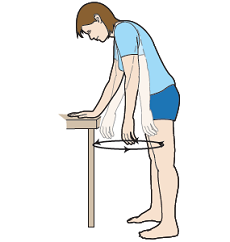
Figure 21. Pendulum exercise
Repeat ____ times.
Do this exercise ____ times per day.
Cane exercise
- Lie on your back with your arms at your side, holding a cane or stick.
-
Lift the cane up toward the ceiling and over your head, keeping both arms level with each other (see Figure 22).

Figure 22. Cane exercise - Return your arms to the starting position.
Repeat ____ times.
Do this exercise ____ times per day.
Contact Information
You can reach your occupational or physical therapist at _________________.